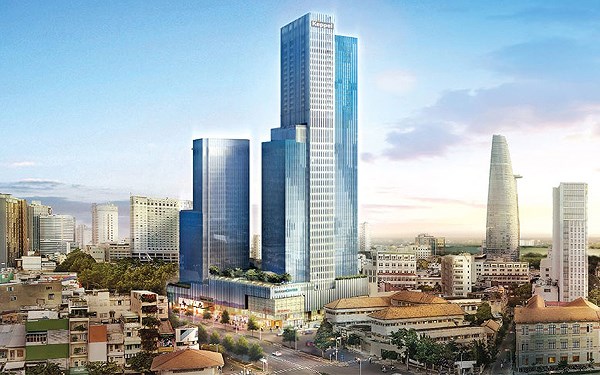Vietnam’s rapid growth fuels Ho Chi Minh and Hanoi property boom
Colliers International Vietnam has just released their Vietnam Quarterly Knowledge Report Q3 2018. The report highlights the national to regional economies of Hanoi and Ho Chi Minh City. It also briefly introduces national economic indicators such as GDP, CPI, FDI, Retail Sales and Trade Balance, and focuses on the market insights of each real estate sector.
- Vietnam’s GDP in Jan-Sep hits 8-year high at 6.98%
- Real estate makes up 23% of Vietnam’s FDI injection
- FDI flow into Vietnam’s real estate sustains stable growth
- IRB-Land Real Estate Co donates 500 million VND to needy people in Tuy Hoa
- Int’l real estate event promotes Vietnam as destination of chances
Ho Chi Minh office city continued to show improvements in average net asking rates for Grade A and Grade B. Rents for Grade A spaces are up 2.2% over the same period last year, sitting at USD47.5/sqm/month. As tenants are seeking rent relief and quality building options, landlords have pushed rents upward. Landlords of Grade B buildings have also enjoyed the spillover effects from Grade A segment with 3.5% q-o-q increase in rents to USD23.4/sqm/month.
 |
Villa and townhouse segment in Ho Chi Minh city is expected to have a positive outlook with conditions enhanced by a combination of increased investor sentiment, developments in international trade and significant government infrastructure investment. It is also forecasted that price of townhouse will grow with faster speed than that of villa due to limited pipeline and possibility of making high profit.
Meanwhiles, the third quarter ended with many positive signals in the Hanoi office market, fuelled by moderate supply growth and healthy demand for both grades. Average net asking rent of Grade A increased 1.2% q-o-q to USD29.9/sqm/month while Grade B’s rent remained relatively static at USD18.6/sqm/month. Average occupancy rate continued to show an upward trend across both grades.
On the back of the strong demand, net asking rent for existing grade A and B office space in Hanoi is expected to increase in the next quarter. There are plenty of opportunities for new developments in the West of Hanoi as existing tenants tend to prefer to stay in the location thanks to large land bank, well- established infrastructure and strong demand for residential apartments in this area.
As more mid to low end housing projects will be added to the future supply pipeline in upcoming years, sale price will not see a significant appreciation for this market segment. Non-urban districts such as Hoang Mai, Ha Dong, Dan Phuong and Gia Lam are being major hubs for lower-end residential products thanks to their large land availability. The existing gap between strong end-users’ demand and limited mid to low end supply is expected to be resolved in the next few years.

